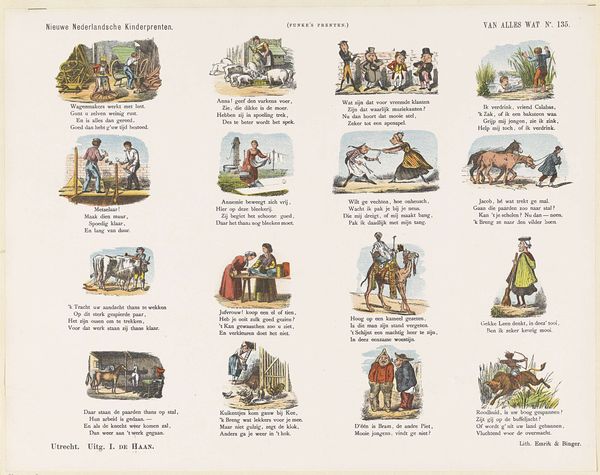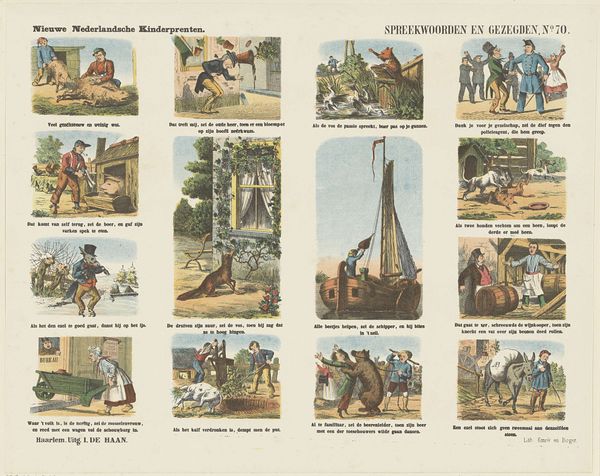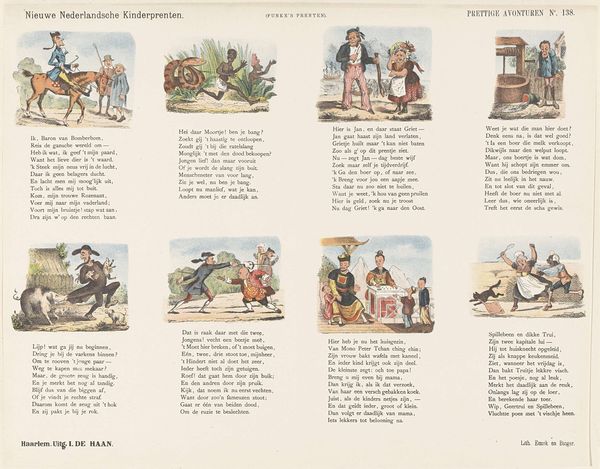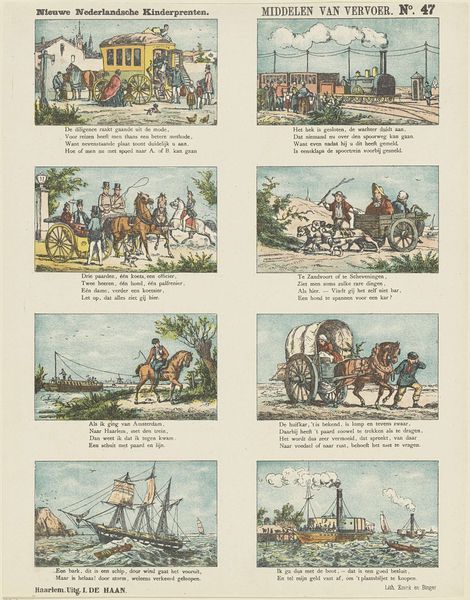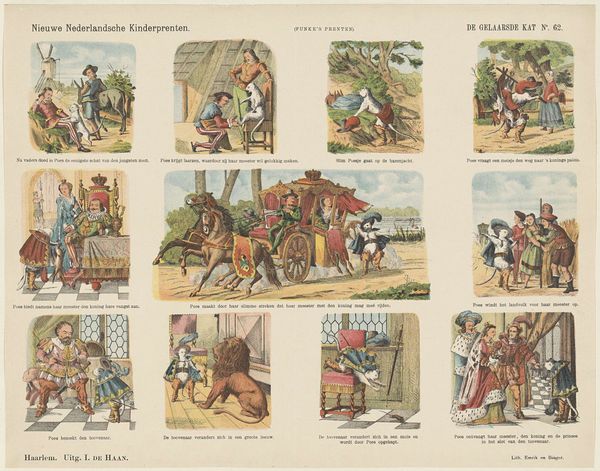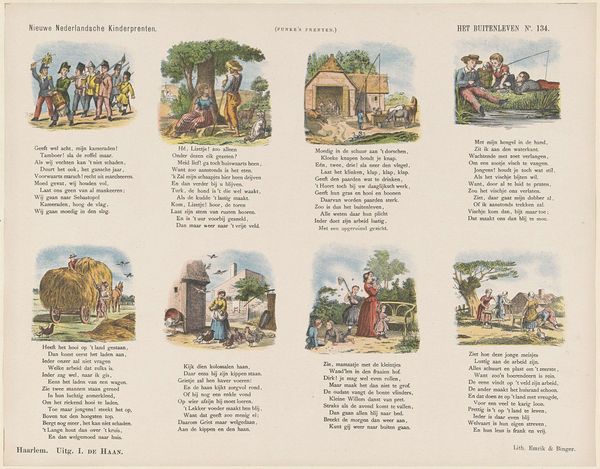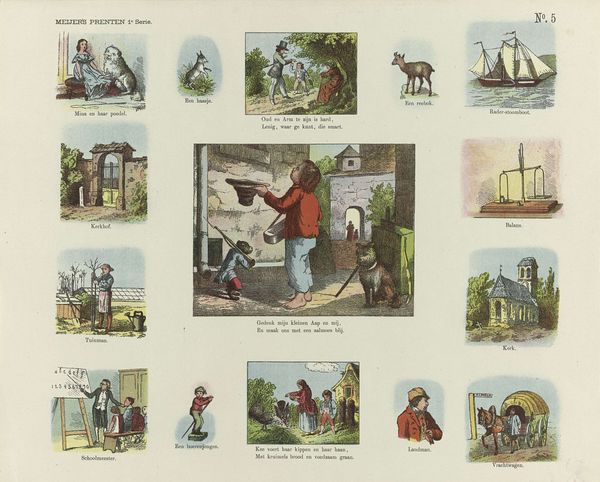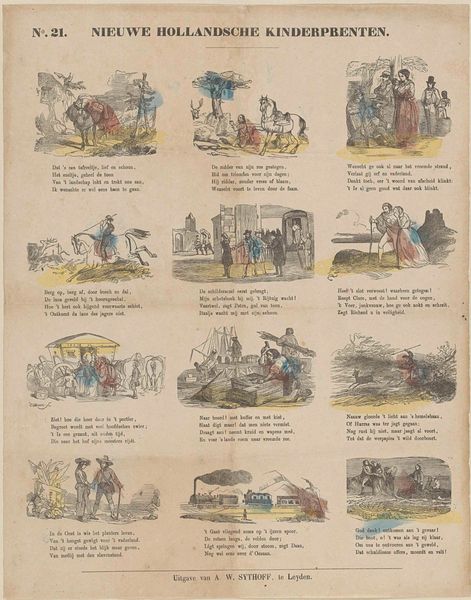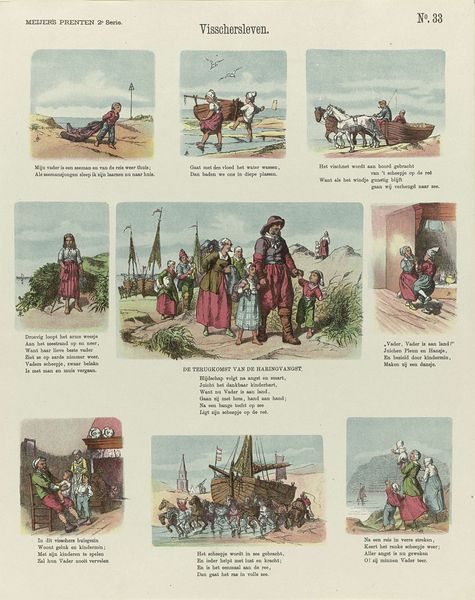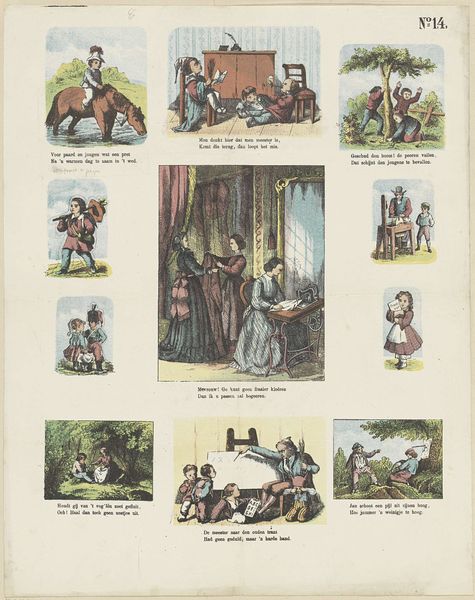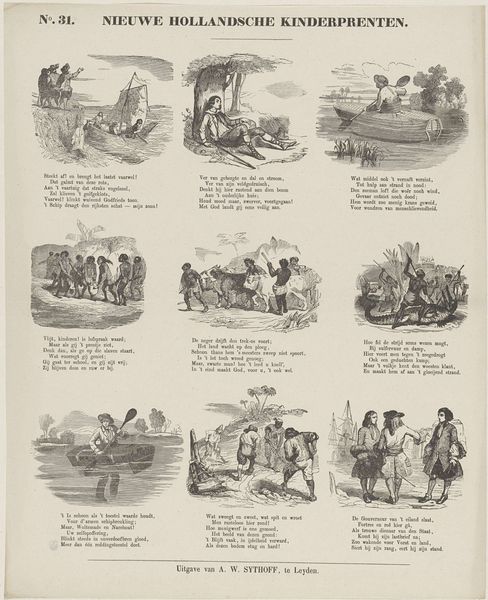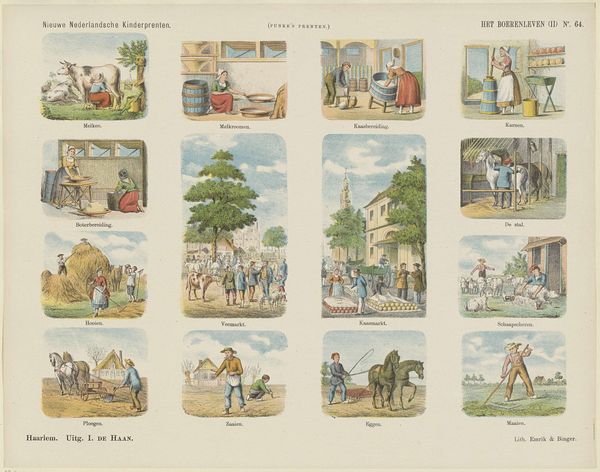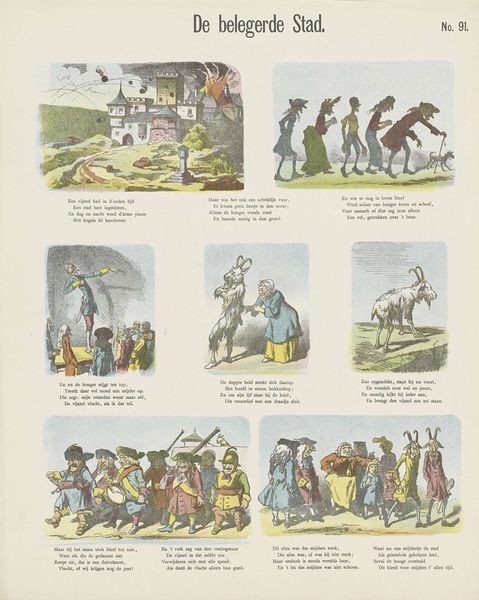
Dimensions: height 328 mm, width 427 mm
Copyright: Rijks Museum: Open Domain
Curator: Here we have a delightful example of a Dutch children's print from the late 19th century, dating between 1875 and 1903. It's called "Varen, jagen en rijden"—"Sailing, hunting, and riding." The printmaker was Jan de Haan. Editor: Oh, what a charming tableau! My first impression is one of utter busyness. Little vignettes stacked together, all bursting with stories, rendered in these muted, almost faded colours. There's a naiveté here that feels genuinely sweet, almost…folkloric. Curator: That's spot on! This would have been one of a series of "New Dutch Children's Prints." The artist captured scenes from daily life and popular pastimes to edify young children. See how it touches upon various activities, creating small narrative episodes? It’s meant to educate, entertain, and instill moral values, characteristic of 19th-century views on childhood. Editor: It's funny, the elephant sticks out for me. Amidst all the scenes of Dutch life, here's this… magnificent beast, so oddly exotic! Does it signal something about trade routes and faraway places being brought into the everyday? What purpose did children serve in Dutch Colonialism, for instance? It all makes you wonder what's implied here… Curator: I love that you are reading the elephant in such a charged way. Looking at these prints in relation to Dutch history invites an important dialogue. The elephant symbolizes not only trade but, potentially, the often brutal realities of colonial power. It’s essential to unpack those complexities within this seemingly harmless genre. It complicates that naive sweetness you mentioned initially. Editor: Absolutely. Seeing it again, the little hunting scene with the eagle... Is that okay, though? This sort of staged hunting for what looks like a pet! The horse scenes... the sheer animal exploitation just comes alive when you let yourself think it through from the animal's point of view. There is a sadness under the fun in them, surely. Curator: A productive thought, placing these practices in relation to an emerging sensibility towards animal welfare during this time! Considering that these images sought to both mirror and instruct children's lives, this adds such needed dimensions of ethical responsibility within what can initially read as innocuous and purely instructive genre painting. Editor: So, looking at this overall, these vignettes give so much to contemplate! In the context of Dutch art history, the artwork acts as a complex archive. It evokes a desire to create meaning from something beautiful that asks very troubling ethical questions, too. Curator: I concur. And situating “Varen, jagen en rijden” within this socio-historical perspective lets us examine and discuss what it truly represents in relation to knowledge, value and power structures. It isn’t just a picture for children—it's an entryway into the complexities of its time.
Comments
No comments
Be the first to comment and join the conversation on the ultimate creative platform.
